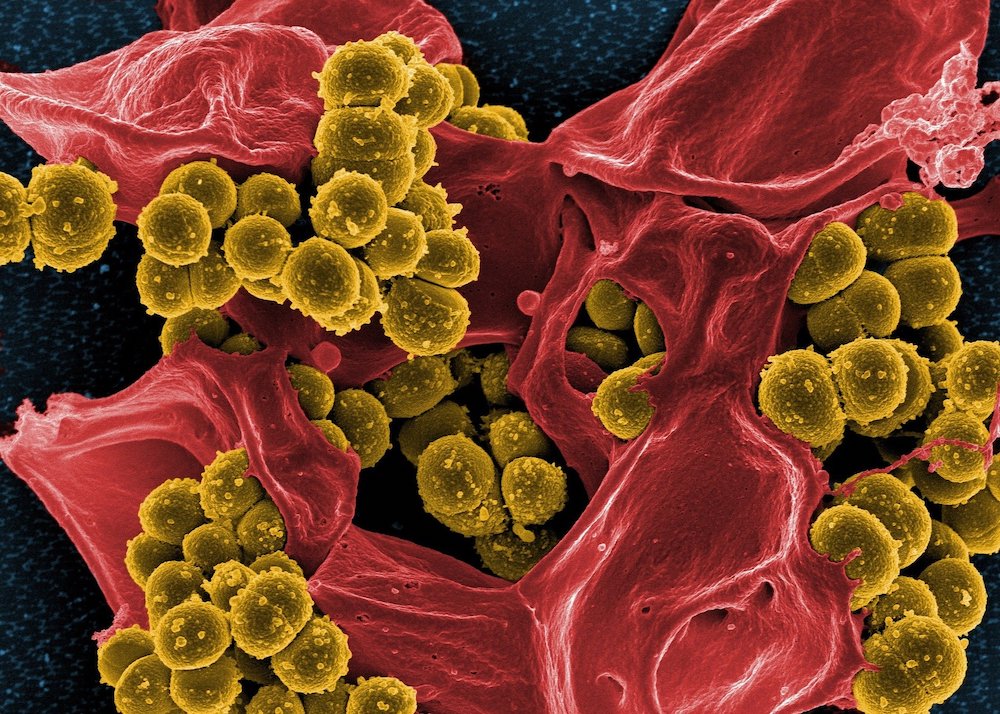 Microbiology
Microbiology
Gut microbes transform the food and the drugs we ingest
We developed and tested a tool that can help researchers understand the role of gut microbes in the production of small molecules that play both helpful and harmful roles in shaping human biology.

Microbes in the human gut play essential roles in maintaining human health. Gut microbes carry out many of these roles using a large toolkit of enzymes that can metabolize and transform larger, complex compounds into smaller compounds. Microbial enzymes breakdown many compounds from the human diet - that human enzymes are unable to process - into products that provide energy to train our immune system or are essential vitamins. Some microbial enzymes can also cause harm if they alter foods or drugs in a way that makes them toxic or prevents them from carrying out a beneficial function. We have limited information about which microbial enzymes interact with which foods and drugs, or how these interactions affect human health.
One way to study the interactions between microbial enzymes and compounds derived from foods and drugs is to focus on the structure or shape of such compounds. The structure of a compound provides insight into what it does and what types of enzyme can transform it. Compounds with structural similarity are selected as candidates to validate with further experiments. Of the thousands of compounds present in the human gut, many of these compounds have unknown functions. Hence we asked the following questions: what is the diversity of structures of known food and drug products that are present in the human gut? How many of these compounds are linked to enzymes? And, is structure similarity an excellent way to predict the function of a compound? We hypothesized that compound structure overlap is a significant predictor of the function of gut compounds that are processed by specific microbial enzymes.
Our approach to addressing this hypothesis involved the construction of a microbe-food-drug interaction network based on: 1)the structure of food and drug compounds; 2)microbial enzymes that transform the compounds, and 3) the toxicity of drug compounds. Our results show that in such a network, the compounds are linked based on a measure of structural similarity and toxicity similarity. We observed that compounds with unknown functions are very similar to compounds with known functions in the network. This result highlights the opportunity for us to make predictions about the function and metabolism of these unknown compounds.
Next, we filtered the network for compounds that shared high structural and toxicity overlap. Among the compounds that met this criterion, we identified an ovarian cancer drug called altretamine and an environmental contaminant called melamine. Both compounds are known to cause damage to the kidney and diarrhea. Melamine was previously found to be converted by microbial enzymes into a compound that is harmful; but, the gut microbiota is not known to play a role in the metabolism of altretamine or its toxicity.
It is hypothesized that altretamine toxicity is caused by its conversion into toxic metabolites. And we thought that the gut microbiota metabolizes altretamine and may, therefore, play a role in its toxicity. Human stool contains a diverse community of bacteria that can serve as an imperfect proxy of the microbial community living in the human gut. We incubated human stool samples with altretamine and quantified the levels of altretamine and metabolites formed over time. We found that a key predicted metabolite formed in the fecal samples.
We used this tool to identify a previously unknown role of gut microbiota in the metabolism and potentially the toxicity of a cancer drug. Beyond drug metabolism, there are many important aspects of human biology that will benefit from a greater understanding of how the gut microbiota processes compounds such as drugs taken for medical use.
There are opportunities to improve our approach by including additional relationships between compounds beyond structural similarity. Our approach is also limited to microbial enzymes present in a publically available database called KEGG. As we learn more about microbial enzymes, we can update and improve the network. This network is a powerful tool to guide mechanistic investigations into diet-drug-microbiota interactions.
Original Article:
Guthrie L, Wolfson S, Kelly L. The human gut chemical landscape predicts microbe-mediated biotransformation of foods and drugs. Elife. 2019;8. doi:10.7554/elife.42866Next read: Gut microbiota drive anti-viral immunity by Saskia Friederike Erttmann , Nelson Ong'ondo Gekara , Sun Nyunt Wai
Edited by:
Dr. Giacomo Rossetti , Senior Scientific Editor
We thought you might like
Starving cancer: dietary modifications may enhance cancer therapy
Feb 15, 2021 in Health & Physiology | 2.5 min read by Boryana PetrovaAge matters: how aging affects cancer
Aug 19, 2021 in Health & Physiology | 3 min read by Ana P. GomesMore from Microbiology
Monoclonal antibodies that are effective against all COVID-19 -related viruses
Jan 31, 2024 in Microbiology | 3.5 min read by Wan Ni ChiaPlagued for millennia: The complex transmission and ecology of prehistoric Yersinia pestis
Jul 31, 2023 in Microbiology | 3 min read by Aida Andrades Valtueña , Gunnar U. Neumann , Alexander HerbigHow cellular transport can be explained with a flip book
Jun 5, 2023 in Microbiology | 3 min read by Christina ElsnerThe Achilles’ heel of superbugs that survive salty dry conditions
Apr 24, 2023 in Microbiology | 4 min read by Heng Keat TamNew chemistry in unusual bacteria displays drug-like activity
Mar 21, 2023 in Microbiology | 3.5 min read by Grace Dekoker , Joshua BlodgettEditor's picks
Trending now
Popular topics


